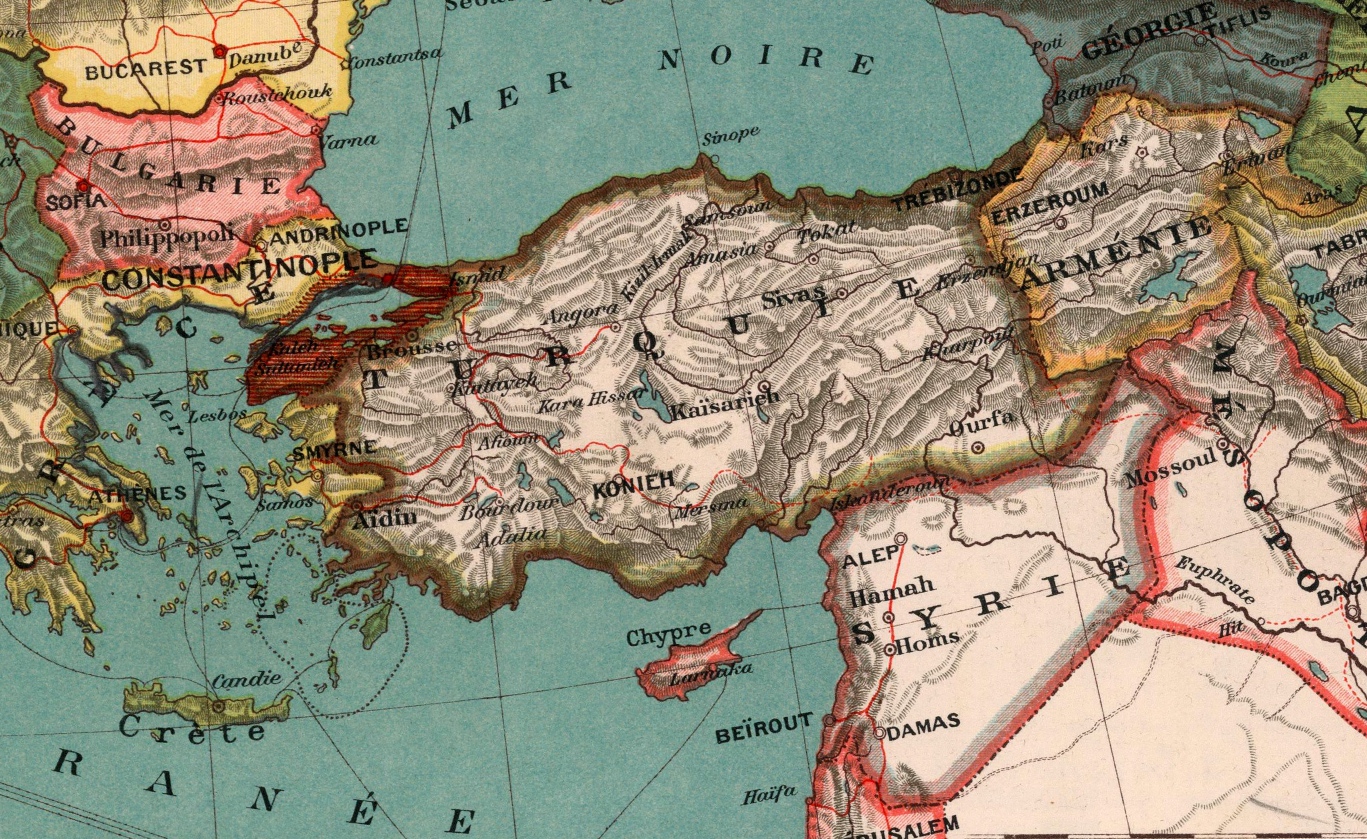“[W]hosoever in authority exceeds the power given him by the law, and makes use of the force he has under his command, to compass that upon the subject, which the law allows not, ceases in that to be a magistrate; and, acting without authority, may be opposed, as any other man, who by force invades the right of another.” – John Locke, Second Treatise of Civil Government, Sec. 202, Chapter 18.
America is known for having a government, as embodied in the United States Constitution, which consists of a system of checks and balances that prevents any of the three branches of government from gaining absolute power. The nearly 230-year history of Constitutional government has, from time to time, seen this system prove its worth.
One of the first well-known instances of a government branch being checked, occurred in 1798. Congress had passed the Alien and Sedition Acts, which were signed into law by President Adams. Although ostensibly aimed at sympathizers of France, with whom the United States was involved in an undeclared naval war, many saw the acts as an attempt to suppress criticism of the U.S. Government. Feeling against it was so strong that state legislatures decided to do something about it. The results were the Kentucky and Virginia Resolutions, which declared that because the ‘federal government had assumed undelegated powers’, the Alien and Sedition Acts were ‘unauthoritative, void, and of no force’, within their respective borders.[1]
In 1803, the Supreme Court declared an act of Congress void, in the case of Marbury v. Madison. In Section 13 of the Judiciary Act of 1789, Congress had given the Court the power to issue writs of mandamus. However, the SCOTUS found that this exceeded the enumerated powers granted to Congress by the U.S. Constitution. And so Congressional power was checked, at the same time that Judicial power grew.[2]
Another episode occurred in the War of 1812: the United States attempted to invade Canada, via the Niagara front, but the Federal Government could not legally order the New York State Militia to invade another country. It could only be used to repel invasions. The New York militiamen were politically aware, and legally refused to cross the border into Canada.[3]
In 1857 the US Supreme Court ruled that runaway slave Dredd Scott was the property of his Southern owner, not a legal person with standing to sue for his freedom. In the wake of this decision, a number of northern states (New York, Ohio, Massachusetts, and Pennsylvania) passed legislation which nullified the SCOTUS decision, within their jurisdictions. As a result, it became difficult or impossible for Southerners to recover their property in runaway slaves, if they fled to a Northern state. While the SCOTUS had made a technically correct ruling, it learned that its power was not supreme, in the face of moral outrage.
In more recent times, the US Congress placed a check on the so-called “Imperial Presidency”, by limiting its ability to deploy American soldiers. The War Powers Act of 1973 had come about, because over time US Presidents had sent more than 500,000 American troops to Viet Nam, without a declaration of war. Passed by an overwhelming majority, the Act required the U.S. President to notify Congress within 48 hours of having committed the US Military to combat, and forbade such armed forces from remaining in a foreign country for more than 60 days, without Congressional authorization; an additional 30-day window provided for an orderly withdrawal of such troops.[4] For a while, this piece of legislation curtailed Presidential military adventures, but appeared to be in peril as a result of Obama’s unauthorized military intervention in Libya. However, the threat of its invocation was enough to prevent him from attacking Syria.
The checks-and-balances discussion has now shifted to the “tyranny of the courts”. Previous US Presidents battled to keep the Judicial Branch from intruding on what they viewed as Executive prerogatives: President Andrew Jackson ignored a Supreme Court ruling, which favored the Cherokee Indians over the State of Georgia. Jackson remarked: “John Marshall has made his decision; now let him enforce it”, and proceeded to support Georgia against the Cherokees.[5] And Abraham Lincoln placed judges under house arrest, when they defended the civil liberties of suspected Confederate sympathizers.[6] In these cases, the affected justices appear to have been conscientious in their legal research and appear to have done their intellectual best, when forming the opinions they had arrived at, even if dissenting opinions could be made.
However, after World War 2, the Judicial Branch began to walk away from sound, legal rulings and began its penchant for inventing intent and legal doctrine. One notable example is the Separation of Church and State doctrine. In 1947, in Everson v. Board of Education, the Supreme Court based its doctrine on a letter that Thomas Jefferson wrote to the Danbury Baptists, in which he expressed the opinion that there should be “a wall of separation between church and state”.[7] Jefferson’s letter was neither a founding document, nor an executive order, nor a state paper, nor an act of Congress, and therefore, not a solid foundation upon which to build a legal principle. It was a letter which expressed the opinion of a US President. As such, it is worthy of historical interest, but not for issuing judicial edicts. This example of ‘judicial legislation’ has gone unchecked to this day.
And the rampage continues. Into the first weeks of America’s latest Presidency, Judge Robart of Washington State and the 9th Circuit Court of Appeals obstructed Trump’s executive prerogatives, vis-à-vis immigration. The new President issued an Executive Order that temporarily blocked immigration from certain Muslim countries, known for being hotbeds of terrorism. Obama had acted similarly in the case of Iraq, but no judge found fault in that President…John Eastman, a political commentator for The Hill, pointed out that the courts neither bothered to refer to the law in dispute, nor to explain why President Trump is supposedly in error.[8] Indeed, they were decisions whose sole foundation was sanctimony. Trump and his team subsequently issued a revised version of the original executive order, but en echelon, the U.S. District Court in Hawaii continues the attack on President Trump’s immigration policy, with Judge Derrick K. Watson issuing a temporary restraint against the revised order.[9] These Judicial attacks on the Executive Branch may be without precedent in American jurisprudence, but problem judges have a history far more ancient than the United States.
The Old Testament makes reference to problem judges, whom the Jews referred to as “Rebellious Elders”. In Deuteronomy 17:11-12 we find: “11. According to the sentence of the Law which they shall teach thee, and according to the Judgment which they shall tell thee thou shalt do: thou shalt not decline from the Sentence which they shall shew thee, to the right hand, nor to the left. 12. And the man that will do presumptuously, and will not hearken unto the Priest (that standeth to minister there before the Lord thy God) or unto the Judge, even that man shall die, and thou shalt put away the evil from Israel.”
According to the Talmud, the prohibition in Deut. 17:12 did not refer to an ordinary man who refused to abide by a decision of a priest or a judge, but applied only to a judge: that is, an Elder, a member of a superior court, such as the Sanhedrin of Twenty-Three or the High Court in Jerusalem. Such an elder who defied an authoritative Rabbinic interpretation of Torah only, not an interpretation of Rabbinic law, was found guilty of a capital offense…Whether the Supreme Court could pardon a rebellious Elder and overlook the affront to its authority and the damage to law and order, was debated in the Talmud. The opinion of the majority was against pardon, as it would tend to increase divisions in Israel.[10]
So the idea that judges might attempt to pervert or overthrow the law, and be punished for it, was a question that was raised far back in antiquity. This same question is considered in the U.S. Constitution under the articles for impeachment.[11] However, in the present political landscape, President Trump may not find sufficient votes in Congress for an impeachment, nor for a successful conviction in the Senate; so other recourse must be had, in order to counter judicial tyranny.
When push comes to shove with an out-of-control Judiciary, President Trump’s best bet may be to follow the example of Andrew Jackson. When a judge or court tries to trample on Presidential prerogatives, he might simply send the offenders a polite message, advising them that he is not required to comply with an illegal order, explain where the offense lies, and then proceed with business as intended. And necessity may dictate that he consider Abraham Lincoln’s approach to insubordinate jurists. In either case, he will be aided by the fact that the jurists who confront him cannot show the same due diligence that their predecessors did, for they are indeed, Rebellious Elders.
Patrick Cloutier
Mr. Cloutier is an author and translator of several books.
Three Kings: Axis Royal Armies on the Russian Front 1941.
Three Kings: Axis Royal Armies on the Russian Front 1942.
[1] https://en.wikipedia.org/wiki/Kentucky_and_Virginia_Resolutions
[2] http://www.history.com/topics/marbury-v-madison
[3] R. Ernest Dupuy and Trevor N. Dupuy, The Encyclopedia of Military History from 3500 B.C. to the present (New York: Harper and Row, 1986) 797.
[4] https://en.wikipedia.org/wiki/War_Powers_Resolution
[5] https://sustainableatlantaga.com/2015/04/02/remembering-the-time-andrew-jackson-decided-to-ignore-the-supreme-court-in-the-name-of-georgias-right-to-cherokee-land/
[6] http://www.freerepublic.com/focus/backroom/1195393/posts?page=60
[7] http://www.freerepublic.com/focus/news/987191/posts
[8] http://www.wnd.com/2017/02/its-coup-detat-by-9th-circuit/
[9] http://www.vdare.com/articles/the-travel-ban-trumps-tweets-and-so-called-judges
[10] George Horowitz, The Spirit of Jewish Law. A Brief Account of Biblical and Rabbinical Jurisprudence with a Special Note on Jewish Law and the State of Israel (New York: Bloch Publishing Company, 1993) 200-201.
[11] Article I: Sec. 2, Para. 5; and Article I: Sec. 3, Para. 6, United States Constitution.








